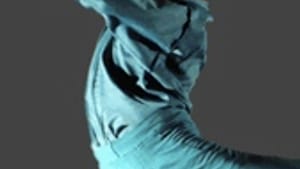Stay in the Loop
BSR publishes on a weekly schedule, with an email newsletter every Wednesday and Thursday morning. There’s no paywall, and subscribing is always free.
Kip Martin's "Namja Yoja' at UArts

Dancing vs. acting:
There is a difference
JIM RUTTER
During the final week of rehearsals for his production of Chekhov’s Three Sisters, a director friend of mine once experimented by having the cast perform an entire run-through without speaking any of the text, using only gestures, expressions and the director’s blocking to tell the story. Though Three Sisters is hardly known for its exuberance or buoyancy, he had always considered it a potential libretto for ballet—much like John Cranko’s dance adaptation of Pushkin’s Eugene Onegin—and he wanted to see the possibilities latent in the unspoken text.
My friend did manage to infuse enough movement and gesture to make it work—without music— but I wouldn’t call what resulted dance. I could say the same for the central piece in an evening of duets performed by Kip Martin and Sun-Mi Cho. Namja Yoja clearly lies in the dance theater tradition—just minus the dance.
Chekhov’s added dimension
But unlike Chekhov’s work— which among other things, explores the dynamics of human relationships and presents an almost exquisite sense of how unfulfilled longing differs between men and women— Martin’s and Cho’s new piece only presented strong, emotionally resonant images, but no exploration of greater themes.
Their methodical, almost ritualistic movements instead show the difference in a single day’s activity between a man and a woman. The prop-centered segments— each finds various representations and uses for a blanket— open before a rising sun as Martin’s sentinel-like man strides across the stage. He exits, and Cho enters to pick up the blanket and cradle it gently, like a child. Later, as Cho’s woman sleeps, Martin lays a blanket across her and stands guard.
Where and when did they set this? More important, when you title your piece “man/woman,” and then only show how the pair goes through their day without any deeper exploration of differences other than to show her gentle passivity contrasted with his protectiveness— well, I’d just as soon have spent the time reading similar banalities in any chapter of Men Are From Mars, Women Are From Venus.
Namja Yoja requires far more acting than dance, so the real problem results from Cho’s superior dramatic skill. Although I love to see her perform, here she’s not a good dance partner for Martin. Some dancers need to take an “acting for dancers” class, while other dancers could teach actors a thing or two. Cho falls into the latter camp. Her nuanced expressions nearly rescue this piece from its primary problem, to wit: Stage directions—no matter how complex—don’t equal choreography.
Poisoning the boss
Even Martin seems to realize this in the final movement of Three Moments in Paris. Parts One and Two show brief amounts of dancing—mainly Cho’s vibrantly executed twirls and fluid kicks—in telling the stories of a maid poisoning her abusive boss and Martin’s remembrances of a flawed lover who dances in and out of the stage in flashbacks.
By contrast, he ends Part Three—and the entire evening—in the highly enjoyable segment called “The Connector,” where a pair of lagging mirror images dance in tandem before uniting in a charged, highly erotic pas de deux. Here he had dance without the theater.
Like bulls in a ring
So watching Namja Yoja felt especially strange after witnessing the evening’s first two works— YWA (You Want Angst?) and his 2005 Echolalia— in which Martin clearly demonstrates that he can choreograph in multiple genres.
Set to Talvin Singh’s “Anger/Grief remix” of music by Ryuichi Sakamoto, in YWA Martin and Cho perform mostly classical ballet movements with the stampede-like force of bulls in a ring, showing plenty of angry arabesques and pissed off pointe movements. In contrast to the delicate, at times dainty grace of the ballet, he and Cho throw their shoulders back, slam their full feet down angrily, and charge to the front of the stage, glaring at the audience with all the subtlety of a pro wrestler’s ringside strut.
Perhaps Martin should have titled this You Want Attitude? instead. In either case, YWA’s gorgeous, albeit brief, ending only served to prove that classical movements possess far greater force—and attitude—when performed with grace and dignity.
The desire to touch
In contrast to the brutal forcefulness of YWA, Martin’s Echolalia shows a sensitive four-part meditation on the inherent, instinctual desire to touch, to connect and to melt into another. Set to music by Rimsky-Korsakov, Dvorak, and Erik Satie (with a brief, jarring interlude by Henry Cowell), the gorgeous images of the first two movements show a soft, supple juxtaposition of two bodies, that if “echoing” anything, most resemble Aristophanes’ speech on love in Plato’s Symposium.
Here, two lovers long to become whole by connecting in rapturous, sensual motions: In one instance, Martin splays himself in a push-up position while Cho cradles her body underneath. Her arms and legs wrapped around his torso and her body facing the floor, she swings beneath him like a bell. Later, separated only by a length of sheer red fabric, they struggle to remain tied together as the cord slowly slips between their fingers, leading to separation.
In his third section, Martin almost painfully shows that too much closeness and familiarity can breed an equally great desire for distance that any pair must then struggle to reconcile. And through the delicate movements of Part Four, Cho leads him across the stage toward a renewal of harmony; when he falters— in the most touching image of the night— she gently catches him mid fall by the head, like a mother cradling her infant into sleep.
I can only complain that this otherwise wonderful piece felt too short. As for dance theater? Martin needs to figure out how to integrate into his storylines the vivid choreography of which he’s capable.
There is a difference
JIM RUTTER
During the final week of rehearsals for his production of Chekhov’s Three Sisters, a director friend of mine once experimented by having the cast perform an entire run-through without speaking any of the text, using only gestures, expressions and the director’s blocking to tell the story. Though Three Sisters is hardly known for its exuberance or buoyancy, he had always considered it a potential libretto for ballet—much like John Cranko’s dance adaptation of Pushkin’s Eugene Onegin—and he wanted to see the possibilities latent in the unspoken text.
My friend did manage to infuse enough movement and gesture to make it work—without music— but I wouldn’t call what resulted dance. I could say the same for the central piece in an evening of duets performed by Kip Martin and Sun-Mi Cho. Namja Yoja clearly lies in the dance theater tradition—just minus the dance.
Chekhov’s added dimension
But unlike Chekhov’s work— which among other things, explores the dynamics of human relationships and presents an almost exquisite sense of how unfulfilled longing differs between men and women— Martin’s and Cho’s new piece only presented strong, emotionally resonant images, but no exploration of greater themes.
Their methodical, almost ritualistic movements instead show the difference in a single day’s activity between a man and a woman. The prop-centered segments— each finds various representations and uses for a blanket— open before a rising sun as Martin’s sentinel-like man strides across the stage. He exits, and Cho enters to pick up the blanket and cradle it gently, like a child. Later, as Cho’s woman sleeps, Martin lays a blanket across her and stands guard.
Where and when did they set this? More important, when you title your piece “man/woman,” and then only show how the pair goes through their day without any deeper exploration of differences other than to show her gentle passivity contrasted with his protectiveness— well, I’d just as soon have spent the time reading similar banalities in any chapter of Men Are From Mars, Women Are From Venus.
Namja Yoja requires far more acting than dance, so the real problem results from Cho’s superior dramatic skill. Although I love to see her perform, here she’s not a good dance partner for Martin. Some dancers need to take an “acting for dancers” class, while other dancers could teach actors a thing or two. Cho falls into the latter camp. Her nuanced expressions nearly rescue this piece from its primary problem, to wit: Stage directions—no matter how complex—don’t equal choreography.
Poisoning the boss
Even Martin seems to realize this in the final movement of Three Moments in Paris. Parts One and Two show brief amounts of dancing—mainly Cho’s vibrantly executed twirls and fluid kicks—in telling the stories of a maid poisoning her abusive boss and Martin’s remembrances of a flawed lover who dances in and out of the stage in flashbacks.
By contrast, he ends Part Three—and the entire evening—in the highly enjoyable segment called “The Connector,” where a pair of lagging mirror images dance in tandem before uniting in a charged, highly erotic pas de deux. Here he had dance without the theater.
Like bulls in a ring
So watching Namja Yoja felt especially strange after witnessing the evening’s first two works— YWA (You Want Angst?) and his 2005 Echolalia— in which Martin clearly demonstrates that he can choreograph in multiple genres.
Set to Talvin Singh’s “Anger/Grief remix” of music by Ryuichi Sakamoto, in YWA Martin and Cho perform mostly classical ballet movements with the stampede-like force of bulls in a ring, showing plenty of angry arabesques and pissed off pointe movements. In contrast to the delicate, at times dainty grace of the ballet, he and Cho throw their shoulders back, slam their full feet down angrily, and charge to the front of the stage, glaring at the audience with all the subtlety of a pro wrestler’s ringside strut.
Perhaps Martin should have titled this You Want Attitude? instead. In either case, YWA’s gorgeous, albeit brief, ending only served to prove that classical movements possess far greater force—and attitude—when performed with grace and dignity.
The desire to touch
In contrast to the brutal forcefulness of YWA, Martin’s Echolalia shows a sensitive four-part meditation on the inherent, instinctual desire to touch, to connect and to melt into another. Set to music by Rimsky-Korsakov, Dvorak, and Erik Satie (with a brief, jarring interlude by Henry Cowell), the gorgeous images of the first two movements show a soft, supple juxtaposition of two bodies, that if “echoing” anything, most resemble Aristophanes’ speech on love in Plato’s Symposium.
Here, two lovers long to become whole by connecting in rapturous, sensual motions: In one instance, Martin splays himself in a push-up position while Cho cradles her body underneath. Her arms and legs wrapped around his torso and her body facing the floor, she swings beneath him like a bell. Later, separated only by a length of sheer red fabric, they struggle to remain tied together as the cord slowly slips between their fingers, leading to separation.
In his third section, Martin almost painfully shows that too much closeness and familiarity can breed an equally great desire for distance that any pair must then struggle to reconcile. And through the delicate movements of Part Four, Cho leads him across the stage toward a renewal of harmony; when he falters— in the most touching image of the night— she gently catches him mid fall by the head, like a mother cradling her infant into sleep.
I can only complain that this otherwise wonderful piece felt too short. As for dance theater? Martin needs to figure out how to integrate into his storylines the vivid choreography of which he’s capable.
Sign up for our newsletter
All of the week's new articles, all in one place. Sign up for the free weekly BSR newsletters, and don't miss a conversation.

 Jim Rutter
Jim Rutter